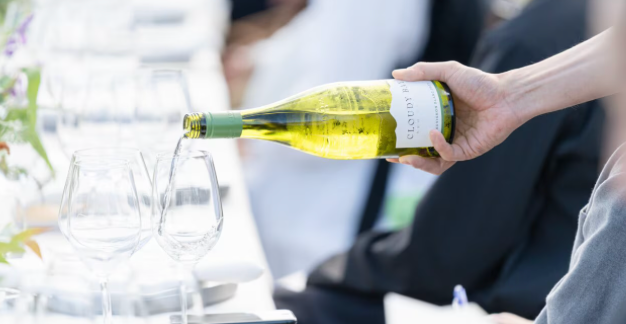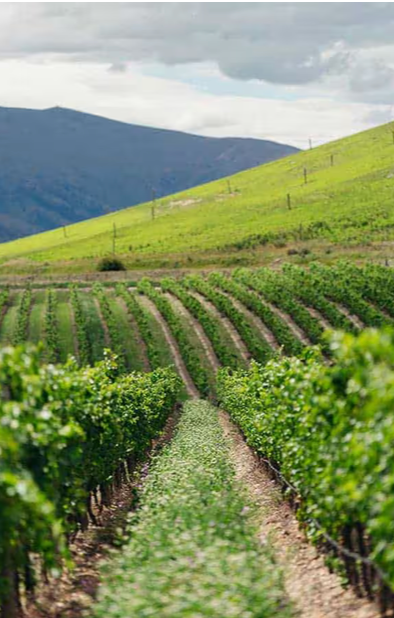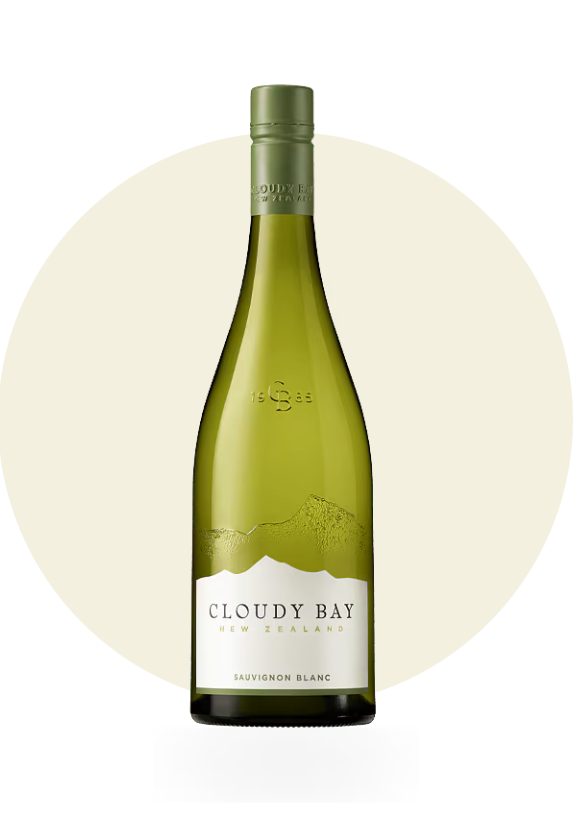
Sustainable Award-Winning Cloudy Bay New Zealand Wines

During Earth Month, sustainability to protect and hopefully improve the environment is the main focus, however Cloudy Bay Wines practice sustainability all year round.

Winemaker Nikolai St. George
The winery is a founding member of Sustainable Winegrowing New Zealand, a world-leading sustainability certification program for the global wine industry. Cloudy Bay joined Veuve Clicquot in 2003, and became part of the LVMH family in 2010. Their Sauvignon Blanc put New Zealand wine on the world map. Cloudy Bay joined Veuve Clicquot in 2003, and became part of the LVMH family in 2010.
This wine brand has pioneered initiatives that encourages and elevates wine companies to set the highest standards for environmental stewardship and social responsibility throughout the global wine industry.

Cloudy Bay Vineyards
Here are a few of those sustainability goals and practices:
-
100% grape waste reuse: Transforming waste into wealth, Cloudy Bay reuses 100% of grape waste to nourish their vineyards, boosting soil health and biodiversity.
-
Renewable energy leadership: Maintaining 100% reliance on renewable energy, Cloudy Bay is crafting a net-zero roadmap by 2025, setting a new standard for reducing carbon footprints.
-
Land restoration: By 2027, Cloudy Bay aims to plant 10% of non-vineyard land with indigenous vegetation, enhancing ecosystems and preserving biodiversity.
-
Support for seasonal workers: Cloudy Bay is establishing a $1 million impact fund by 2030 to support their seasonal workers, prioritizing social equity and economic empowerment.
-
Net-positive groundwater impact: Cloudy Bay remains committed to responsible water management, ensuring a net-positive impact on groundwater.
-
More sustainable packaging: Cloudy Bay utilizes glass with a high recycled glass content and use locally produced glass and shippers to reduce carbon footprint overall.

The grapes grow at two vineyards. In Marlborough, they farm 163 parcels of vines and 65 grower blocks. These vineyards are closer to the Wairau River and have stony, sandy and free-draining soils ideal to make their iconic Sauvignon Blanc. The 2023 Sauvignon Blanc has an enticing nose, offering appealing aromas of ripe honeydew melon, passionfruit, vibrant citrus and a subtle touch of fresh blackcurrant. On the palate this wine is concentrated and elegant, with hints of fresh sea air balancing out the warmth of the ripe fruit notes at the wine’s core. Subtle tropical fruit characters on the freshening finish include notes of makrut lime, lemongrass, Meyer lemon and a touch of grapefruit skin. It’s ideal to pair with a watermelon, cucumber and feta salad. Here is the recipe to replicate this dish for a summer party.

Further south of the river in the Southern Valleys, the Pinot Noir and Chardonnay vineyards are planted in clay-based soils to create Cloudy Bay’s captivating style of wine.
CLOUDY BAY PINOT NOIR
The Pinot Noir offers notes of crushed rose petals and sun-warmed red cherry. The silky tannins and touch of acidity, frame and balance the sweetness of summer berries, soft spices and a touch of vanilla. Long on the finish, this wine evokes warm summer evenings barbecuing proteins and vegetables, before ending with strawberry shortcake.

CLOUDY BAY CHARDONNAY
The Cloudy Bay Chardonnay is pleasing on the nose, offering a wisp of ripe notes of Meyer lemon and succulent white nectarine. There is a subtle oak and flavors of the crackling top on vanilla crème brûlée vanilla. There is a mouthwatering citrus essence balanced with fruity nuances. This wine is divine to pair with grilled salmon, a pear, gorgonzola cheese and pecan salad, and a summer peach pie.
CLOUDY BAY TE KOKO
The Cloudy Bay winemakers ferment Te Koko in French oak barrels with indigenous yeasts. This helps to increase the complexity of the wine over four to five months. Then it rests in barrel on fine lees for 15 months before blending and maturation in Cloudy Bay’s cellars.
It’s a Sauvignon Blanc that is initially closed on the nose, but unfurls with notes of tropical fruit, and honey with complex layers of peach, preserved citrus and toasted nuts. This wine has a fine line of acidity and an enticing saline minerality. The intense core of fruit provides a fresh, palate-cleansing finish. Enjoy this with a cheese and charcuterie board, Ahi salad, and fruity meringue-based pavlova.
CENTRAL OTAGO VINEYARDS
Cloudy Bay’s two Central Otago vineyards have complementary terroirs. Calvert, in Bannockburn, has loamy, silty soils and gentle slopes that produce wines with fine tannins and silky textures. Northburn’s rocky, glacial soils and extreme slopes produce wines of structure and intensity. Blending grapes from the two contrasting sites gives the Cloudy Bay Te Wāhi Pinot Noir its poise and power.

CLOUDY BAY TE WāHI
In te reo Māori, Te Wāhi means ‘the place’ reflecting both the importance of terroir and the sense of finding home. Cloudy Bay’s Te Wāhi is a powerful wine with an opulent core of dark berry fruit and structured tannins. Over time, warm spices and notes of forest floor flourish and provide complexity.
Here is a list of food pairing recipes to enjoy with a glass or bottle of New Zealand’s Cloudy Bay Wines.
Cheers!



































